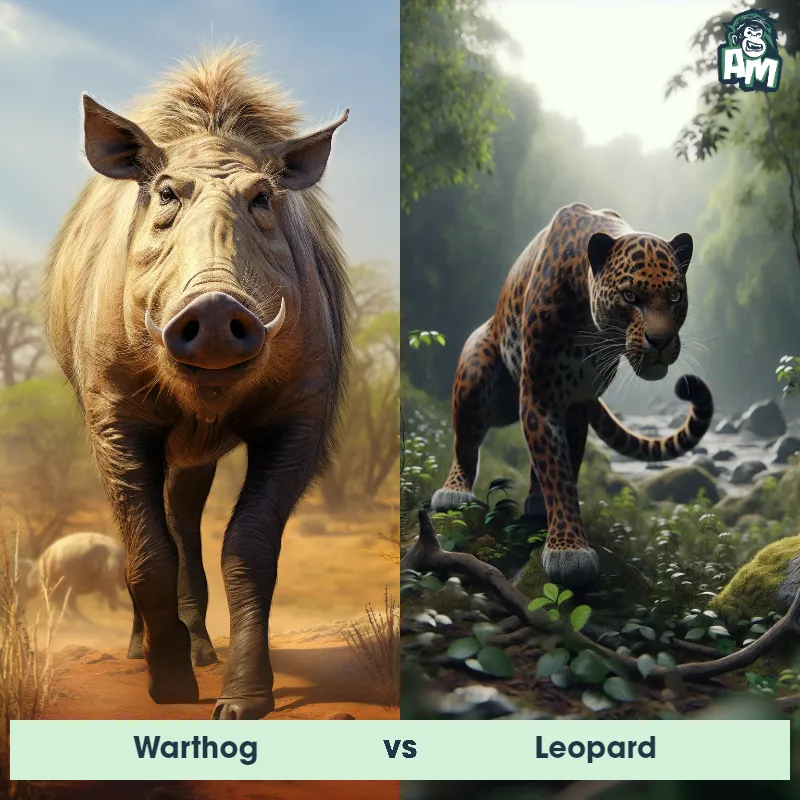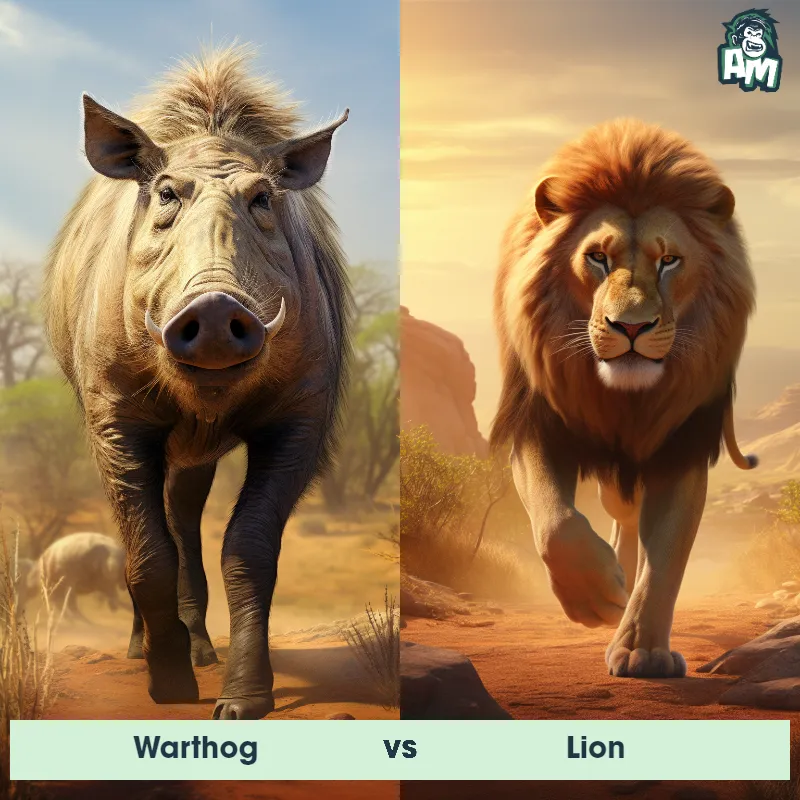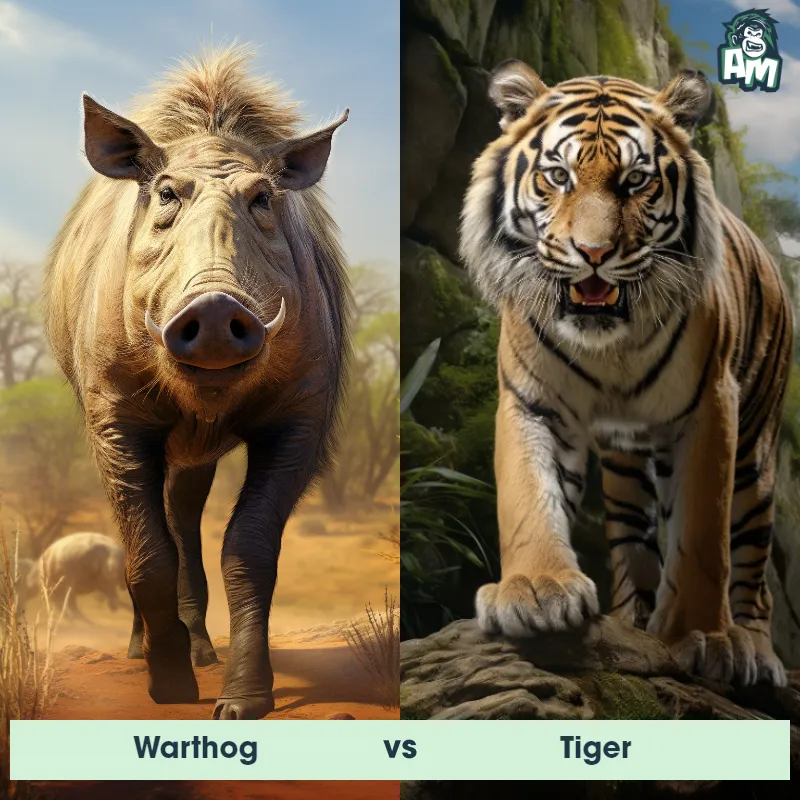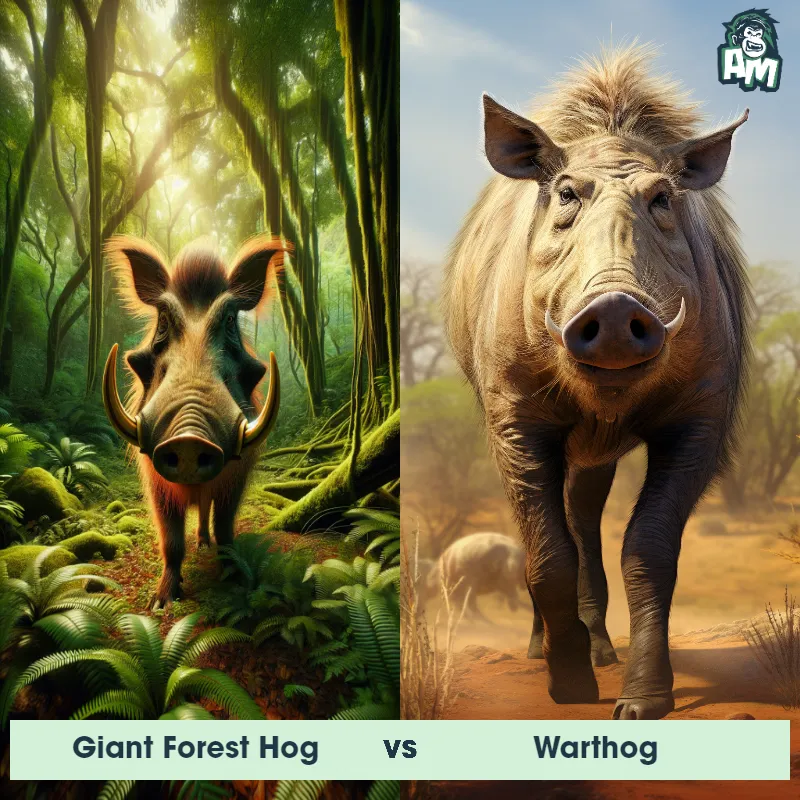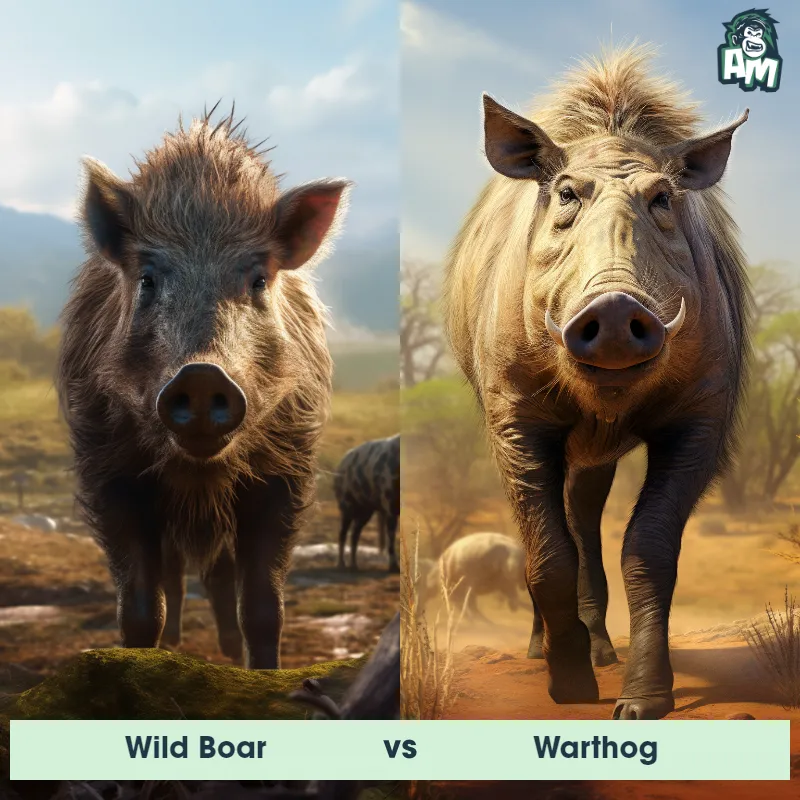The Warthog
The Warthog, also known as Phacochoerus africanus, is a wild pig species found in the grasslands, savannas, and woodlands of sub-Saharan Africa. They are characterized by their sturdy build, with a compact body, a large head, and prominent tusks that curve upward. Warthogs have a bristly, grayish-brown coat, with a sparse mane along their back, and a long, tufted tail. They have a distinctive pair of warts on their face, which serve as protection during fights. Adults typically weigh between 100 to 250 pounds, and can reach a shoulder height of up to 30 inches. Despite their formidable appearance, they are generally herbivorous, feeding on grasses, roots, fruits, and tubers.
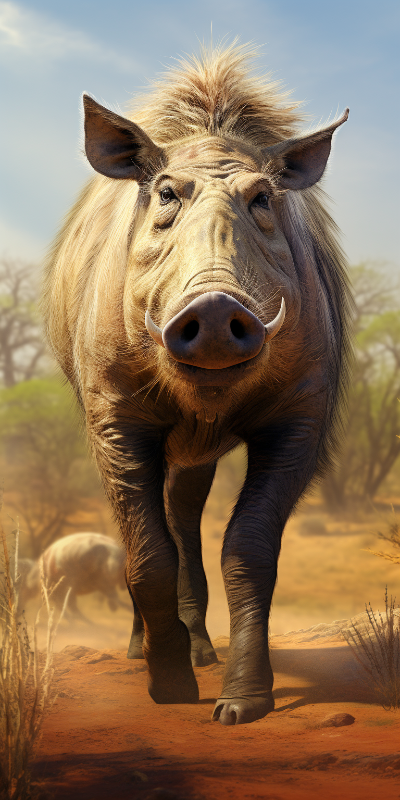
| Warthog | |
|---|---|
| Size | 3.3 feet tall at the shoulder (1 meter) |
| Weight | 150-300 pounds (68-136 kilograms) |
| Speed | 78mph (125km/h) |
| Key Strength | Speed and agility, sharp tusks |
| Biggest Weakness | Poor eyesight |
| Scientific Name | Phacochoerus africanus |
| Family | Suidae |
| Habitat | Grassland, Savannah, Woodland |
| Geography | Sub-Saharan Africa |
| Diet | Omnivorous (Grasses, Roots, Berries, Bark, Insects, Small Mammals) |
| Lifespan | 8 years - 15 years |

The Warthog
The Warthog, also known as Phacochoerus africanus, is a wild pig species found in the grasslands, savannas, and woodlands of sub-Saharan Africa. They are characterized by their sturdy build, with a compact body, a large head, and prominent tusks that curve upward. Warthogs have a bristly, grayish-brown coat, with a sparse mane along their back, and a long, tufted tail. They have a distinctive pair of warts on their face, which serve as protection during fights. Adults typically weigh between 100 to 250 pounds, and can reach a shoulder height of up to 30 inches. Despite their formidable appearance, they are generally herbivorous, feeding on grasses, roots, fruits, and tubers.
Fun Fact: Warthogs are excellent diggers and excavators, and they use their snouts and strong front hooves to dig burrows or enlarge existing ones, which they use as shelter from predators and extreme weather conditions.
| Warthog | |
|---|---|
| Size | 3.3 feet tall at the shoulder (1 meter) |
| Weight | 150-300 pounds (68-136 kilograms) |
| Speed | 78mph (125km/h) |
| Key Strength | Speed and agility, sharp tusks |
| Biggest Weakness | Poor eyesight |
| Scientific Name | Phacochoerus africanus |
| Family | Suidae |
| Habitat | Grassland, Savannah, Woodland |
| Geography | Sub-Saharan Africa |
| Diet | Omnivorous (Grasses, Roots, Berries, Bark, Insects, Small Mammals) |
| Lifespan | 8 years - 15 years |
Warthog Matchups
We use AI to simulate matchups between the Warthog and other animals. Our simulation considers size, strength, and natural predatory behaviors to determine the most likely outcome.

Can't find the Matchup you want?
Create Your Own MatchupWarthog: Diet, Predators, Aggression, and Defensive Behaviors
What do Warthogs eat?
Warthogs are omnivorous animals, meaning they eat both plant matter and small animals. Their diet typically consists of grasses, roots, fruits, and insects. They use their tusks to dig up roots and tubers, and their snouts to grub for underground food sources.
Do Warthogs have any predators?
Yes, Warthogs have several natural predators in the wild. Some of their primary predators include lions, leopards, hyenas, and crocodiles. They are often targeted when they are young or sick, as they are more vulnerable during those times.
Are Warthogs aggressive?
Warthogs are not typically considered aggressive animals. However, they may become aggressive when threatened or cornered. They are known to use their sharp tusks as a means of defense when necessary.
Do Warthogs fight?
Warthogs are not generally known for engaging in fights with one another. However, they may exhibit aggressive behavior when competing for mates or resources. They will use their tusks to defend their territory if challenged.
How do Warthogs defend themselves?
Warthogs have several methods of defending themselves against predators. They can run at impressive speeds of up to 30 miles per hour to escape danger. If cornered, they will use their powerful tusks to ward off attackers, and they may also use their sharp teeth and strong jaws for defense.
What is the Warthog's biggest weakness in a fight?
The Warthog's biggest weakness in a fight is its relatively small size compared to some of its predators. While they are strong and have sharp tusks for defense, they can be overpowered by larger predators, especially when they are young or sick. They rely on their speed and agility to evade attacks in order to survive in the wild.
Fun Fact: Contrary to their name, warthogs do not actually have warts. The facial "warts" are structural protrusions of bone and cartilage that provide protection to their eyes and forehead during combat.
Fun Fact: Warthogs are known for their exceptional running speed and agility. Despite their stocky build, they can reach speeds of up to 30 miles per hour for short distances, helping them evade predators like lions, leopards, and hyenas. In addition, they are excellent swimmers and can traverse bodies of water when needed.



